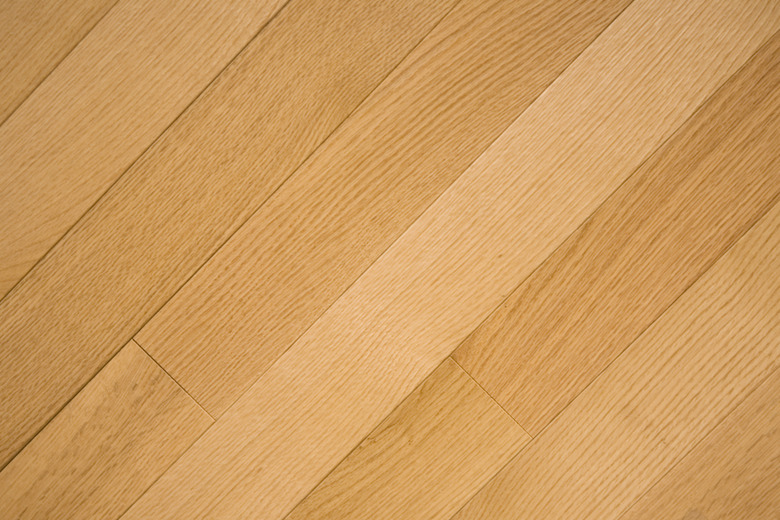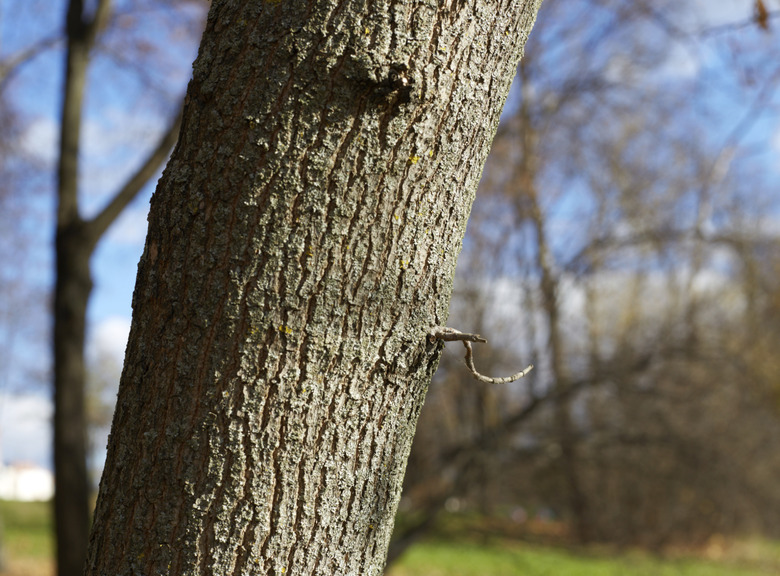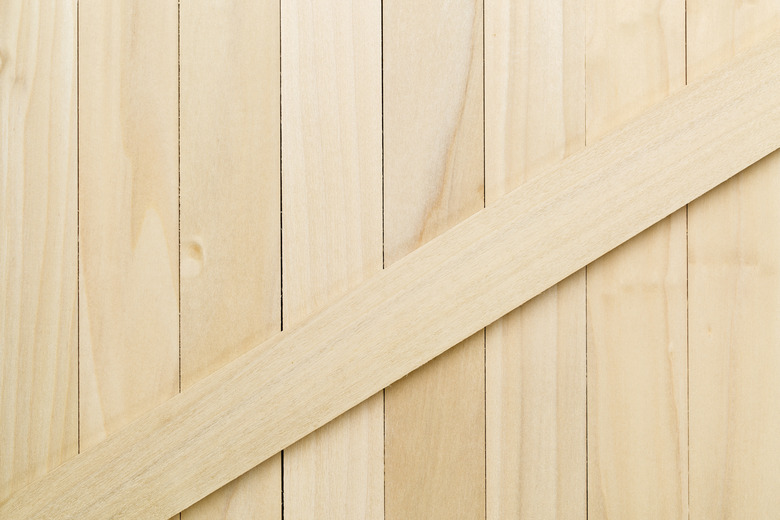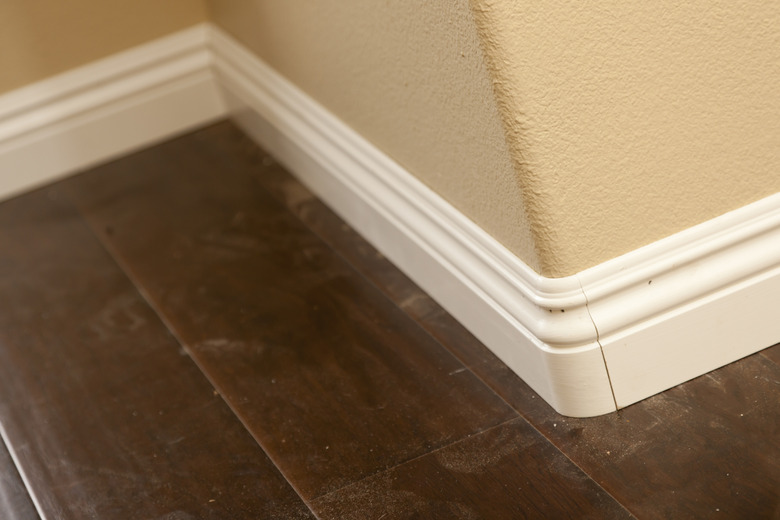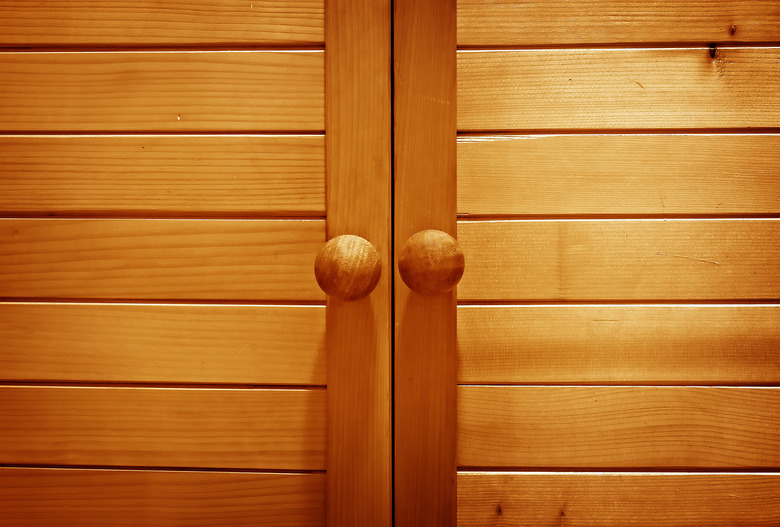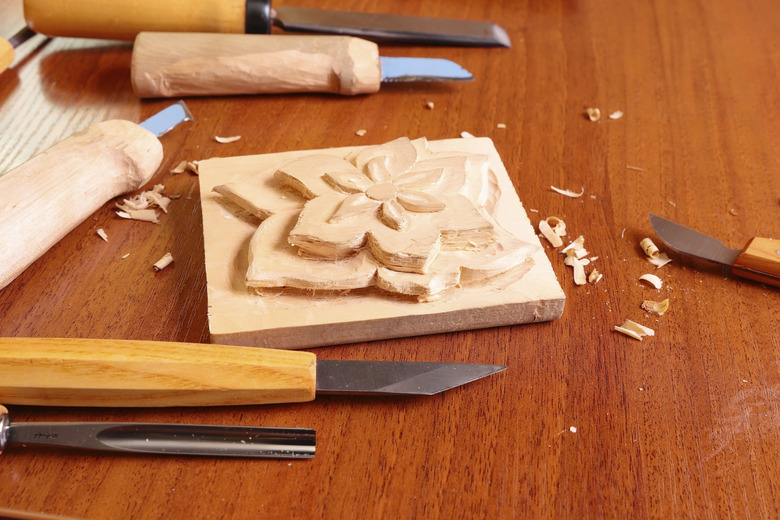Poplar Wood Vs. Red Oak
Poplar and red oak are domestic hardwoods. With a broad range of differentiating qualities, the two are somewhat like comparing apples and oranges. Density, grain, color, cost, appearance and strength are a few of the issues that separate the two.
Density
Density
Red oak is denser than poplar. On the Janka scale — a scale that rates all wood for density — red oak ranks 1,290, while poplar is only 540. For the sake of comparison at the bottom of the scale, white pine ranks 380. Brazilian walnut at the top of the scale ranks 3,684. The difference in density means red oak is also heavier than poplar. Poplar is more flexible and more resilient than red oak. The density of red oak means that it's also more brittle than poplar. When bending similar pieces, red oak is more likely to shatter or crack than poplar.
Appearance
Appearance
Poplar is consistently white or off-white, with streaks of yellow and green, and sometimes streaks of purple and black. With little or no grain pattern, poplar is considered somewhat bland in appearance. Red oak ranges in color from light-amber to pinkish red and has complex, intricate grain patterns that resemble flames. For the most part it's consistent in color and pattern, but can vary with large swirls of brown or black. Red oak and poplar can be stained, but oak will always reflect a deeper, richer tone than poplar.
Workability
Workability
Poplar is easier to mill, cut, sand and nail than red oak. The natural resiliency of poplar yields to saw blades, router bits, chisels and knives more easily than the brittle consistency of red oak. Common steel blades work fine on poplar, but red oak lumber will dull steel blades causing burning, chattering and splintering on a table saw. Carbide-tipped blades, which are sharper and retain an edge longer, are recommended for red oak — but they're also more expensive. If poplar sustains gouges or scratches, they can typically be sanded out by hand. Red oak finish preparation involves multiple sanding with graduating sandpaper grits from coarse to fine before its ready to finish. If red oak sustains gouges or deep scratches, it typically requires the use of power sanders to remove them.
Moldings
Moldings
Poplar and oak moldings are widespread in the building industry. Poplar is generally regarded as a paint-grade molding. It is smooth, consistent and accepts any kind of paint or stain without problems. Oak moldings are almost always stained and and then given a clear topcoat to bring out grain patterns. Poplar molding is slightly flexible and bends easily, and typically run in lengths of 10 feet or more. Oak moldings are usually shorter, can be slightly brittle, are more prone to splitting, and more difficult to cut and nail than poplar.
Cabinets and Furniture
Cabinets and Furniture
Red oak is better for stained cabinets. The upfront cost is more for red oak than poplar, but the resale value is higher for stained red oak than poplar. Red oak cabinets are more durable than poplar cabinets, resisting dents and scratches better. On the other hand, poplar is often favored for the structural components in cabinets — such as drawers, guides and struts — because it's cheaper, lighter and easier to work with. Poplar is better for painted cabinets. It paints smoother and more efficiently than red oak, due to the open pores and grain indentations in red oak that show through paint. For chairs, tables or furniture it's personal preference. If you like wood that yields easily to woodworking equipment, poplar is the way to go. If you like exclusive, high-end projects, red oak is better.
Carving
Carving
Poplar is better for the hobbyist who carves or otherwise manipulates wood to make scrolls, turnings, models or small crafts. The soft, yet resilient wood yields easily to knives, carving tools, rotary tools, files and other hand tools. Red oak, with its hard, brittle nature, is more likely to splinter and chip, and it requires more force to carve red oak than poplar. Choose poplar for fewer blisters on your fingers.
